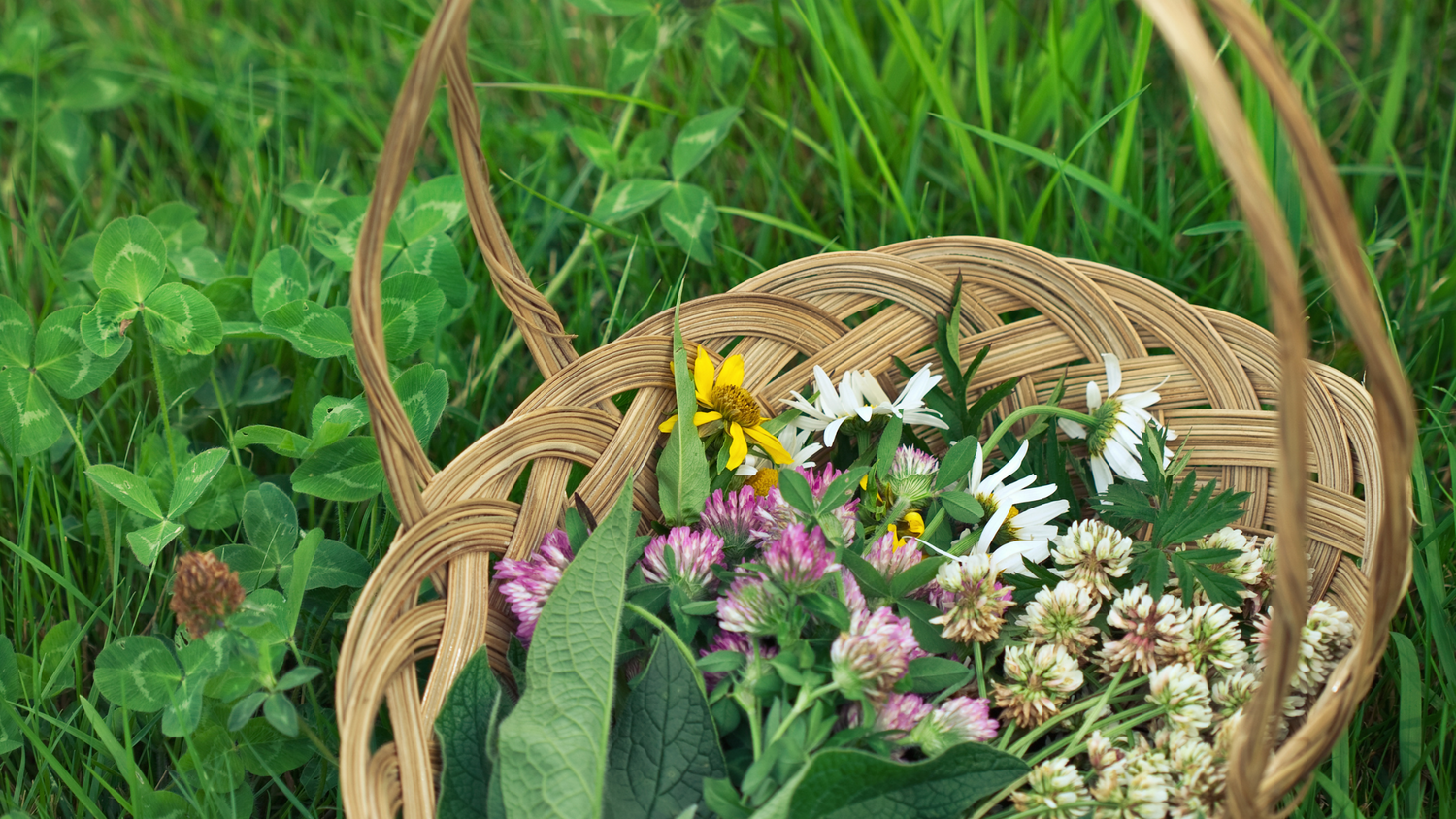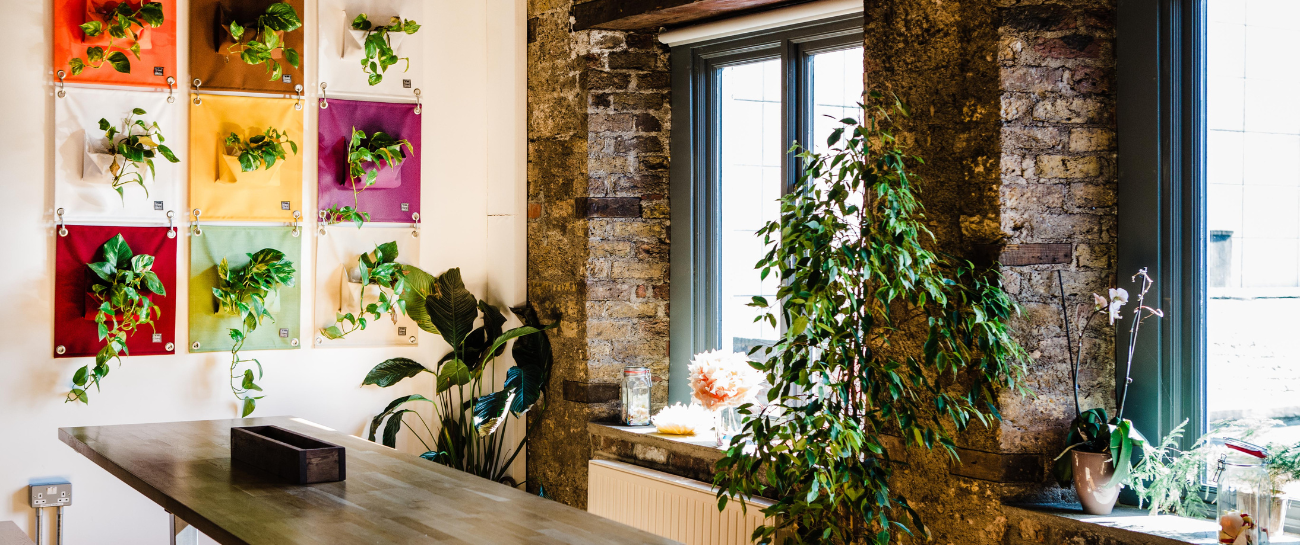It's no wonder why the Calathea plant -- also commonly known as the prayer, peacock or zebra plant -- is such a popular household plant. The mesmerising patterns found on the foliage of Calathea houseplants will likely make you do a double-take. Its beautiful foliage of bright white veins against green, red and cream leaves provides an interesting and unique texture to any room of your house.
The calathea belongs to the Marantaceae family and is widely known by its’ nickname, “prayer plant”, because its leaves fold together at night, like praying hands. If you’re up early enough, you’ll see those leaves relax at sunrise to collect all the day’s rays. It is thought that this movement allows the plant to best capture the sun's rays, allowing for better growth.
Native to Brazil and grown indoors year-round, calathea are true tropicals in every sense of the word, gaining a reputation for being somewhat fussy about their growing conditions. However, with the proper care and TLC, this beauty of a plant is worth all the effort.
One more fabulous feature that makes this plant a great all-rounder is that it is considered pet-friendly. Air-purifying, beautiful foliage and friends for your pup and puss, what’s not to like?!
Thinking of adding a Calathea plant to your growing indoor plant family? Here’s everything you need to know! 👇

Common Calathea Plant Varieties
There are over 300 species of calathea found in nature, many boasting different eye-catching leaf patterns, colouring, and veining, along with some exotic tropical blooms. The most common varietals typically seen as houseplants include:
- Calathea ornata: pretty pink and white striped leaves
- Calathea makoyana: purplish colouring on the undersides of its leaves, with white and green on top.
- Calathea zebrina: green, stripe-like markings on the tops of its leaves, with rich purple undersides.
- Calathea crocata: boasts beautiful displays of upright orange-red flowers, earning it the nickname "eternal flame."

Common questions about the Calathea plant
Known for its fussy nature, it’s no wonder we get a lot of questions about this beautiful tropical plant! We believe knowledge is power when it comes to plant care, which is why we have rounded up the most common questions (and our answers) to share with you below:
Why are the leaves of my Calathea plant wilting/ curling? Underwatered. Suggests your plant is thirsty and dry. Increase the humidity by regularly misting. Ensure you are watering regularly (weekly) but allowing the soil to drain properly and the top 2 inches of the soil to dry out before the next watering session. Calatheas are unique because their leaves close at night and open when the sun rises in the morning. They do this to conserve moisture and follow the sun’s movements throughout the daytime.
Help! My Calathea plant leaves are turning yellow:
Yellowing leaves might suggest that your Calathea has been scorched by direct sunlight or watered with tap water containing high levels of fluoride. Relocate your plant to a spot with ample indirect sunlight and water with filtered water once the top inch of soil is dry.
I’ve noticed several spots on my Calathea’s leaves. What does this indicate?
Leaf spots can mean several things, from fungal infection to mineral build-up from tap water. We recommend switching to filtered water and water directly into the soil rather than on the plant itself. The Calethea is also prone to a few pests, like spider mites. But don’t worry- with regular maintenance, you should be able to keep this under control. Treat pests as soon as they appear with weekly sprays of a natural pesticide and regular wipe-downs of the plant. Repeat the process every two weeks to control the spread from reoccurring.
My Calathea plant hasn’t flowered. Is this normal?
Most Calathea plants do not flower indoors; however, they will reward you with their striking colourful foliage, which resembles a flower. If you want to have a flowering Calathea, opt for the Calathea crocata, also known as the “Flowering Calathea”. This variety gives gorgeous orange flowers indoors, which grow above the foliage, which is very effective.

How to care for your Calathea
The Calathea has a reputation of being a pretty fussy plant to care for, and it's easy to see why. They're susceptible to chilly temperatures and grow best when kept in a warm, humid environment (not often found here in Ireland!)
The good news? As long as you take care to mimic the balmy temps, moisture-packed air, and shady environment calathea love, they can thrive in nearly any household. While the Calathea plant does demand more care, it’s worth it to see those beautifully patterned leaves move around throughout the day and into the evening. Here are a few of our top tips to keep your Calathea plant thriving and surviving indoors:
![]() Light: The ideal spot for the Calathea plant is one where they will receive a medium to bright indirect light. Direct sunlight can be damaging and may cause colours to fade. Considering that we don’t get full sun in Ireland all year round, they can be placed in a sunny window. However, be careful about the sunny days! Calathea can handle low light, but increased light can help maintain the vivid colours and patterns on the foliage.
Light: The ideal spot for the Calathea plant is one where they will receive a medium to bright indirect light. Direct sunlight can be damaging and may cause colours to fade. Considering that we don’t get full sun in Ireland all year round, they can be placed in a sunny window. However, be careful about the sunny days! Calathea can handle low light, but increased light can help maintain the vivid colours and patterns on the foliage.
![]() Water: Calathea plants have high water requirements. Keep moist in the summer (watering once the top inch of soil is dry) and water sparingly in the winter. Use a well-draining potting mix. The type of water can also play a part in the health of your Calathea- this diva plant prefers filtered water over tap water. Calathea houseplants do best in well-draining soil and containers with drainage.
Water: Calathea plants have high water requirements. Keep moist in the summer (watering once the top inch of soil is dry) and water sparingly in the winter. Use a well-draining potting mix. The type of water can also play a part in the health of your Calathea- this diva plant prefers filtered water over tap water. Calathea houseplants do best in well-draining soil and containers with drainage.
![]() Temperature: As tropical plants, Calathea like warmer temperatures. In Ireland, your Calathea will do best in rooms with an average temp between 15*C to 23*C. High humidity is also a must-have for the Calathea. Consider incorporating a fine-mist mister or humidifier to boost moisture level indoors.
Temperature: As tropical plants, Calathea like warmer temperatures. In Ireland, your Calathea will do best in rooms with an average temp between 15*C to 23*C. High humidity is also a must-have for the Calathea. Consider incorporating a fine-mist mister or humidifier to boost moisture level indoors.
![]() Feed: The Calathea will benefit from being fertilised during the growing season. A complete liquid fertiliser diluted to half-strength is a good option. These indoor plants do not need to be fertilised during the colder months when the plant is dormant.
Feed: The Calathea will benefit from being fertilised during the growing season. A complete liquid fertiliser diluted to half-strength is a good option. These indoor plants do not need to be fertilised during the colder months when the plant is dormant.
![]() Cleaning: Leaves on your Calathea will get dusty from time to time. To clean them, use a damp cloth to remove the dust. Alternatively, you may use a tepid shower. However, make sure to remove all leftover water from the leaves. Never use any leaf shine products (or leaf polish products) on Calathea plants. Remove any yellow leaves to keep your plant strong and to grow.
Cleaning: Leaves on your Calathea will get dusty from time to time. To clean them, use a damp cloth to remove the dust. Alternatively, you may use a tepid shower. However, make sure to remove all leftover water from the leaves. Never use any leaf shine products (or leaf polish products) on Calathea plants. Remove any yellow leaves to keep your plant strong and to grow.

Where to place your Calathea at home?
The Calathea is a true one-of-a-kind plant and will be a welcome addition to any space in your home. It’s also an excellent air purifier and will help improve the air quality of any space it is placed. To get the most out of your Calathea plant’s many benefits, we recommend light, airy rooms that will allow this unique plant to show off its true beauty.
The Calathea loves humidity, making it an ideal plant for bathrooms. Sit on a corner cabinet with access to indirect sunlight or create an urban jungle feel by placing it at the edge of your bath.
As the Calathea’s leaves move during the day and mainly late evening, it’s worth having it somewhere that it’s easily visible. A kitchen worktop is also a great spot – near the sink so you won’t forget to water it, perhaps. Watching those leaves move as your prepare your evening meal will be a joy, we promise!

Where to buy a Calathea plant online?
Looking to add a Calathea to your growing indoor plant family? You can choose from the following varieties:
If you enjoyed this blog, why not check out some of our similar posts:





